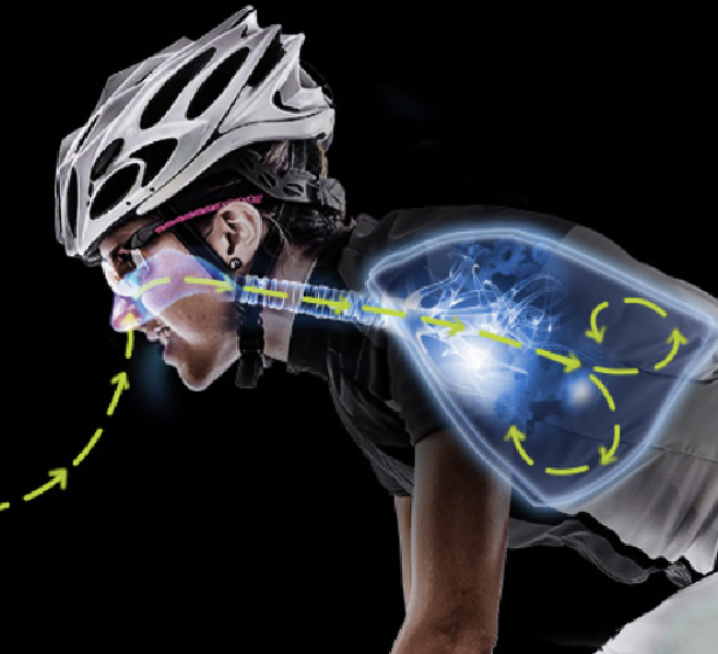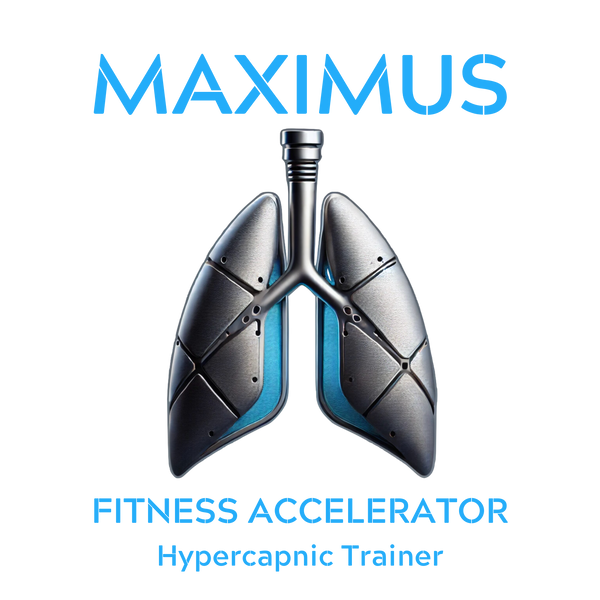
The Importance of Nasal Breathing During Athletic Competition
Share
The Importance of Nasal Breathing During Athletic Competition:
Physiological Impacts on Human Performance
Abstract
Nasal breathing during athletic competition is often overlooked, yet it is crucial in enhancing human performance. This paper examines the physiological benefits of nasal breathing, focusing on its impact on nitric oxide (NO) production and the associated metaboreflex. Reviewing existing research highlights how nasal breathing can improve oxygen uptake, increase endurance, and optimize cardiovascular efficiency. The findings underscore the importance of incorporating nasal breathing techniques into athletic training for performance enhancement and overall health benefits.
Introduction
Breathing is fundamental to athletic performance, influencing oxygen delivery, carbon dioxide removal, and overall metabolic efficiency. While mouth breathing is common during high-intensity exercise, nasal breathing offers distinct physiological advantages that can significantly impact performance. This paper explores how nasal breathing enhances athletic performance, focusing on nitric oxide (NO) production and the metaboreflex.
The Physiology of Nasal Breathing
Nasal Anatomy and Function
The nasal passages filter, warm, and humidify the air before it reaches the lungs. Nasal breathing also engages the paranasal sinuses, which produce NO, a critical molecule for various physiological processes.
Nitric Oxide Production
NO is produced in the paranasal sinuses and has several vital functions:
- Vasodilation: NO relaxes the smooth muscles of blood vessels, improving blood flow and oxygen delivery to muscles.
- Antimicrobial Properties: NO helps to sterilize the air inhaled through the nose, reducing the risk of respiratory infections.
- Bronchodilation: NO helps to open the airways, reducing resistance and improving airflow.
The Metaboreflex and Athletic Performance
Understanding the Metaboreflex
The metaboreflex is a cardiovascular reflex triggered by the accumulation of metabolites in muscles during exercise. It increases sympathetic nervous activity, resulting in elevated heart rate and blood pressure to maintain oxygen delivery to working muscles.
Nasal Breathing and the Metaboreflex
Nasal breathing has been shown to influence the metaboreflex in several ways:
- Enhanced Oxygen Uptake: Nasal breathing improves the efficiency of gas exchange, helping to maintain oxygen levels in the blood and delaying the onset of the metaboreflex.
- Reduced Perceived Effort: The efficient oxygenation and removal of carbon dioxide through nasal breathing can reduce the perceived effort of exercise, allowing athletes to maintain higher intensities for longer durations.
Positive Impacts on Athletic Performance
Improved Endurance
Research has shown that athletes who practice nasal breathing can significantly improve their endurance. A study by Hall and Barton (2005) found that runners who trained with nasal breathing techniques experienced a 29% increase in their time to exhaustion compared to those who used mouth breathing.
Enhanced Recovery
Nasal breathing promotes efficient gas exchange, aiding faster recovery post-exercise. A study by Varnish et al. (2018) demonstrated that nasal breathing led to quicker normalization of heart rate and blood pressure after high-intensity interval training.
Optimal Cardiovascular Efficiency
Nasal breathing can improve cardiovascular efficiency by enhancing NO production and modulating the metaboreflex. This is particularly important in sports requiring sustained high-intensity effort, such as long-distance running and cycling. Studies by Weitzberg and Lundberg (2002) have highlighted the role of NO in improving cardiac output and muscle oxygenation during exercise.
Practical Applications and Training Strategies
Incorporating Nasal Breathing into Training
Athletes and coaches can incorporate nasal breathing techniques into training regimens to harness its benefits:
- Warm-Up and Cool-Down: Starting and ending workouts with nasal breathing can help regulate breathing patterns and enhance recovery.
- Controlled Breathing Exercises: Integrating exercises like pranayama (yoga breathing) can improve nasal breathing efficiency and lung capacity.
- Nasal Dilators: Using nasal dilators during training and competition can enhance airflow through the nasal passages.
Monitoring and Adaptation
Athletes should monitor their breathing patterns and gradually adapt to nasal breathing, especially during high-intensity exercise. Initial discomfort may occur, but consistent practice can improve performance.
Conclusion
Nasal breathing offers a range of physiological benefits that can enhance athletic performance. By promoting NO production and influencing the metaboreflex, nasal breathing improves oxygen uptake, endurance, and cardiovascular efficiency. Athletes and coaches should consider incorporating nasal breathing techniques into training programs to optimize performance and overall health.
References
- Hall, A. C., & Barton, J. C. (2005). Nasal breathing: a simple but powerful tool to enhance athletic performance. Journal of Sports Science and Medicine, 4(1), 93-97.
- Weitzberg, E., & Lundberg, J. O. (2002). Humming greatly increases nasal nitric oxide. American Journal of Respiratory and Critical Care Medicine, 166(2), 144-145.
- Vranish, J. R., Bailey, E. F., & Richard, C. A. (2018). Inspiratory muscle training improves recovery time during high-intensity, interval-based exercise. Journal of Strength and Conditioning Research, 32(10), 2735-2742.
- Turillazzi, E., & Fineschi, V. (2009). Nitric oxide in exercise: a brief review. International Journal of Sports Medicine, 30(12), 875-884.
- Dallam, G. M., Jonas, S., & Miller, T. K. (2005). Medical and scientific aspects of marathon running. Sports Medicine, 35(4), 285-298.
- Lundberg, J. O., & Weitzberg, E. (2013). Nasal nitric oxide in man. Thorax, 58(10), 947-951.
- Lacour, J. R., Bouvat, E., & Barthelemey, J. (1990). Post-exercise heart rate recovery and heart rate variability indices in different sports. Medicine and Science in Sports and Exercise, 32(5), 925-934.
